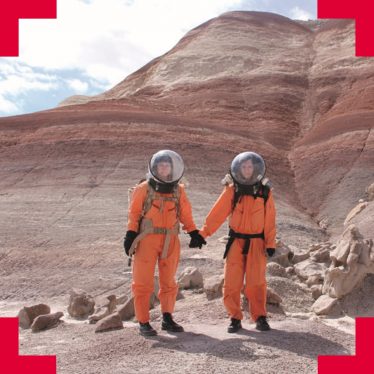Ideas Exchange 2017/2018
What did the project involve?
In a cross-disciplinary project, a team of researchers brought together science, architecture, design, engineering and material development with social arts practice. Together they sought to build a feasible house for humans to live in on Mars.
Wider research questions included:
- How can we make a house today, which works for a future on Mars? Can this be done with accessible technologies?
- What can life on Mars teach us about sustainable technologies for Earth?
- In terms of sociological and cultural enquiry, what does the scenario of humans leaving Earth provoke?
The team first executed a feasibility study. At this stage, they detailed specific environmental challenges on Mars, such as temperatures and radiation. They listed out factors that design choices would need to respond to. They tested out which sustainable technologies were suitable to fulfil these criteria, and completed architectural designs based on their findings.
Ella and Nicki blogged about their experience in running the workshops – read all the details on their website.
Who are the team and what do they bring?
- Dr. Lucy Berthoud (University of Bristol) is interested in Spacecraft Systems Engineering. She brought design guidance and expertise relating to specific conditions on Mars, and what humans might need from a build environment to counter the environmental living challenges. She embeded a scientific rigour within the project’s more creative aspects.
- Ella Good and Nicki Kent (freelance artists) have collaborated for ten years and have a participatory, socially-led practice. They have worked with international space partners in Washington and Utah, and were, at the time of the project, in Year 4 of a ten-year body of work entitled A Decade With Mars, focused on Earth, Mars, and visions of the future. They brought extensive project management and production experience, collated information from all partners and created a plan that involved communities across Bristol in the wider subsequent build.
- Hugh Broughton (Hugh Broughton Architects) designed the Halley VI British Antarctic Research Station.
Other external partners included The Architecture Centre, and Chris Foss, one of the UK’s most recognised science fiction artists.
What were the results?
The project was featured on a Channel 4 documentary, and inspired plenty of media coverage on Bristol 24/7, Spores on Mars, University of Bristol’s newsroom, The Watershed (which also hosted a Lunchtime Talk on the project), and The Conversation.
